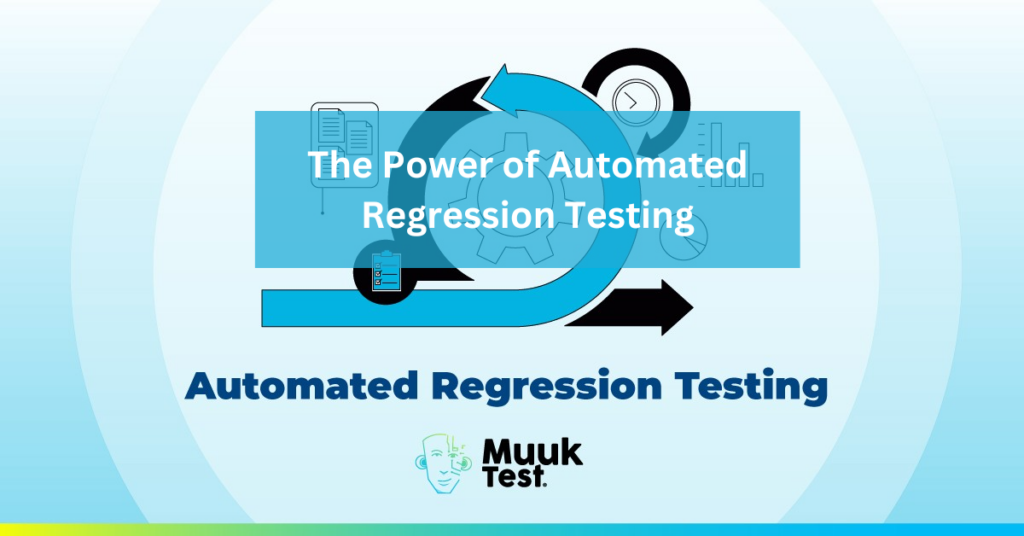The Power of Automated Regression Testing

It is crucial to ensure the stability and dependability of your applications in the quick-paced world of software development. Rerunning previously completed test cases is known as regression testing, which is done to make sure that new features or changes don’t cause unforeseen flaws or disrupt working functionality.
Although manual execution of these tests might be time-consuming and error-prone, regression testing is essential. This is where platforms for automated regression testing come into play, altering how software testing is carried out.
The Importance of Regression Testing
Regression testing is a cornerstone of software quality assurance. It verifies that recent code modifications have not adversely affected the existing functionality of an application. This is especially vital in agile development environments where frequent code changes are the norm. Without effective regression testing, developers risk introducing bugs and errors that may go unnoticed until they cause significant disruptions, potentially harming user experience and a company’s reputation.
Manual regression testing is often impractical, especially when dealing with large, complex applications or frequent code updates. Testers must repeatedly execute a multitude of test cases, a tedious and time-consuming process prone to human error. This is where automation steps in to offer a more efficient, accurate, and cost-effective solution.
Automated Regression Testing
Automated regression testing involves the use of specialized testing tools and scripts to execute a predefined set of test cases automatically. Unlike manual testing, which relies on human intervention, automated regression testing can be scheduled to run at specific intervals or triggered by code changes, ensuring that the software is continuously tested without requiring constant human oversight.
Key benefits of automated regression testing include:
Efficiency: Automated tests can be executed much faster than manual tests, allowing for quicker feedback on code changes.
Accuracy: Automated tests follow predefined scripts precisely, reducing the risk of human error in test execution.
Reusability: Test scripts can be reused across different test cycles, saving time and effort in the long run.
Consistency: Automated tests provide consistent test coverage, ensuring that the same test cases are executed identically each time.
Early Detection of Issues: Automated tests can catch regressions early in the development cycle, preventing defects from reaching production.
Ensuring Comprehensive Test Coverage
One critical aspect of automated regression testing that deserves special attention is its ability to provide comprehensive test coverage. In a constantly evolving software landscape, it’s essential to ensure that every aspect of an application is thoroughly tested, even as new features and updates are introduced. Automated regression testing excels in this regard by executing a predefined set of test cases consistently and exhaustively.
By automating these test cases, development teams can verify that not only the core functionalities but also less frequently used features, edge cases, and potential integration points are tested thoroughly. This comprehensive test coverage helps uncover hidden issues that might otherwise remain undetected until they surface in a real-world scenario, ensuring that the software remains robust, reliable, and user-friendly throughout its lifecycle.
Challenges and Best Practices
While automated regression testing offers many advantages, it’s essential to address some common challenges. Test maintenance, for instance, can become a significant effort as the software evolves. Regularly reviewing and updating test cases is crucial to ensure their relevance.
Additionally, test selection is vital. Not all tests need to be automated, so it’s essential to prioritize which test cases are most critical for automation based on their frequency of execution and impact on the software.
Best Practices for Automated Regression Testing
This section outlines several best practices for optimizing automated regression testing.
Teams should start by prioritizing which test cases to automate, focusing on those that are critical, run frequently, and cover core functionality.
It’s also important to establish a process for regularly maintaining test scripts as the application evolves. Tests should be robust yet flexible enough to accommodate new features without complete rewrites.
Developers need to monitor test coverage to identify any gaps and ensure comprehensive testing. As scripts become complex, refactoring into well-structured, modular components makes maintenance easier.
Integrating automated regression testing into the development workflow, such as through a CI/CD pipeline, helps make it a standard practice.
Finally, choosing high-quality test automation frameworks and tools empowers teams to efficiently author, run and manage tests at scale. Adhering to these practices maximizes the benefits of regression automation.
Conclusion
In conclusion, when it comes to achieving seamless automated regression testing and optimizing your testing processes, Opkey emerges as a standout testing automation platform.
Opkey’s user-friendly interface and robust test automation capabilities empower organizations to enhance efficiency, collaboration, and software quality. With Opkey, you can effortlessly create, manage, and execute automated tests, all while benefiting from cross-browser and cross-device testing, scalable solutions, and insightful reporting and analytics.




